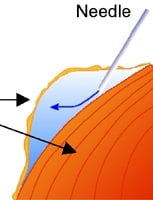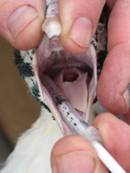Due to some confusion earlier, I thought I should start this artcile. The drug I am going to use as an example is enrofloxacin and that's because it comes in so many strengths. Yeah, I know it's banned for use in poultry, so let's keep the "no to enrofloxacin comments to a minimum" Those that don't know about the ban should read this:
https://www.fda.gov/AnimalVeterinary/SafetyHealth/RecallsWithdrawals/ucm042004.htm
Step One - Figure out what strength the product you have is. Something like enrofloxacin (Baytril) comes in many forms.










These are oral and should be given orally, never by injection.




Step three - What dose and how to give it.


Clinical Avian Medicine

Avian Medicine: Principles and Applications

Step Four - Weigh your bird. For semi-quiet birds under 5 kg (11 pounds), I use a kitchen scale. For the bigger more squirrely types I use a bathroom scale. To do that weigh yourself first, then weigh yourself hold the bird. The difference between the two numbers is the weight of the bird.
When I weigh birds I prefer to use the metric system, but if you choose to weigh in pounds just be ready for a little more math.
Step Five - the math
If you weighed in pounds:
The weight of bird in pounds, divide by 2.2 to convert to kilograms, times desired dose (mg/kg), divide by number of milligrams in one ml (mg/ml)
If you weighed in kg:
The weight of bird in kg, times desired dose (mg/kg), divide by number of milligrams in one ml (mg/ml)
If you weighed in grams:
The weight of bird in grams, times 0.001 convert to kilograms, times desired dose (mg/kg), divide by number of milligrams in one ml (mg/ml)
Step six - Give the medication.
ug = microgram
mg = milligram
g = gram
kg = kilogram
l = liter
ml = milliliter
PO - orally
IM - Intramuscular injection (injection into muscle)
SC or SQ - Subcutaneous injection (injection under skin)
SID - once a day
BID - twice a day
TID - three times a day
mg/ml = milligrams per milliliter
g/l = grams per liter
mg/kg = mg per kilogram
Convert pounds to kilograms - Pounds ÷ 2.2 = kilogram
Convert kilograms to pounds - Kilograms x 2.2 - pounds
https://www.fda.gov/AnimalVeterinary/SafetyHealth/RecallsWithdrawals/ucm042004.htm
Step One - Figure out what strength the product you have is. Something like enrofloxacin (Baytril) comes in many forms.
- 10% (100 mg/ml)
- 5% (50 mg/ml)
- 2.5% (25 mg/ml)
- 2.27% (22.7 mg/ml)
- Custom made by a compounding pharmacy
- Is it an oral or an injectable?
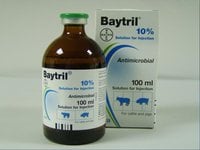
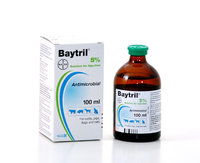
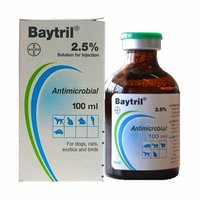
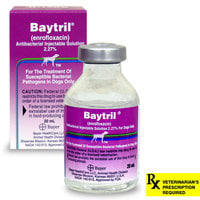
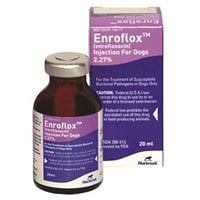
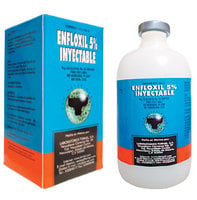
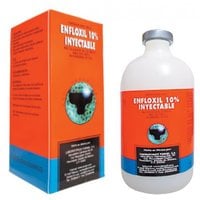
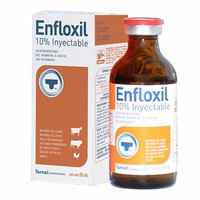
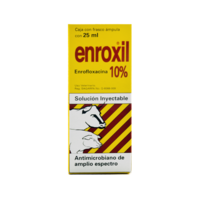
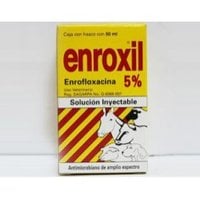
These are oral and should be given orally, never by injection.
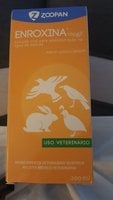
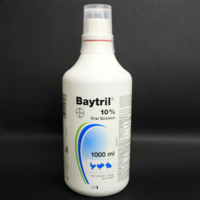
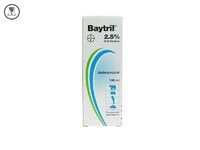
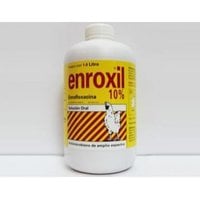
Step three - What dose and how to give it.
- The most common dose seems to be 10 mg/kg *orally* twice a day.
- One person on BYC reported that their vet prescribed 15 mg/kg twice a day for their goose.
- Some books say it can be given once a day.
- Some books say oral (PO), some say injection in the muscle (IM), and some say under the skin (SC or SQ).
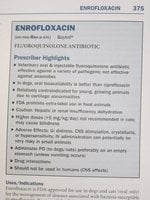
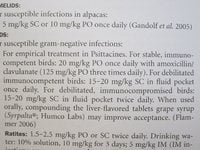
Clinical Avian Medicine

Avian Medicine: Principles and Applications

Step Four - Weigh your bird. For semi-quiet birds under 5 kg (11 pounds), I use a kitchen scale. For the bigger more squirrely types I use a bathroom scale. To do that weigh yourself first, then weigh yourself hold the bird. The difference between the two numbers is the weight of the bird.
When I weigh birds I prefer to use the metric system, but if you choose to weigh in pounds just be ready for a little more math.
Step Five - the math
If you weighed in pounds:
The weight of bird in pounds, divide by 2.2 to convert to kilograms, times desired dose (mg/kg), divide by number of milligrams in one ml (mg/ml)
If you weighed in kg:
The weight of bird in kg, times desired dose (mg/kg), divide by number of milligrams in one ml (mg/ml)
If you weighed in grams:
The weight of bird in grams, times 0.001 convert to kilograms, times desired dose (mg/kg), divide by number of milligrams in one ml (mg/ml)
Step six - Give the medication.
- PO or Orally - How to Safely Administer Oral Medications

ug = microgram
mg = milligram
g = gram
kg = kilogram
l = liter
ml = milliliter
PO - orally
IM - Intramuscular injection (injection into muscle)
SC or SQ - Subcutaneous injection (injection under skin)
SID - once a day
BID - twice a day
TID - three times a day
mg/ml = milligrams per milliliter
g/l = grams per liter
mg/kg = mg per kilogram
Convert pounds to kilograms - Pounds ÷ 2.2 = kilogram
Convert kilograms to pounds - Kilograms x 2.2 - pounds



